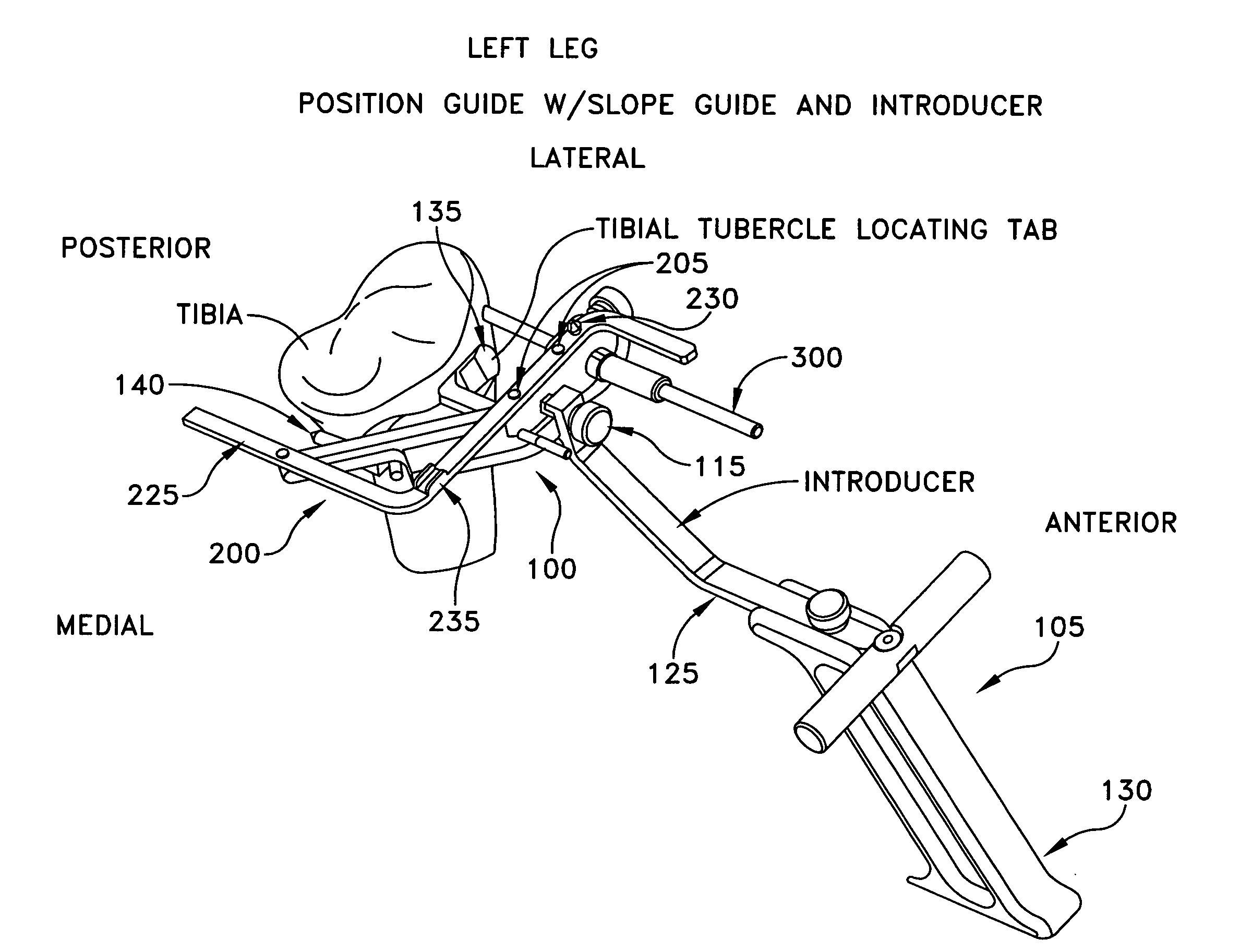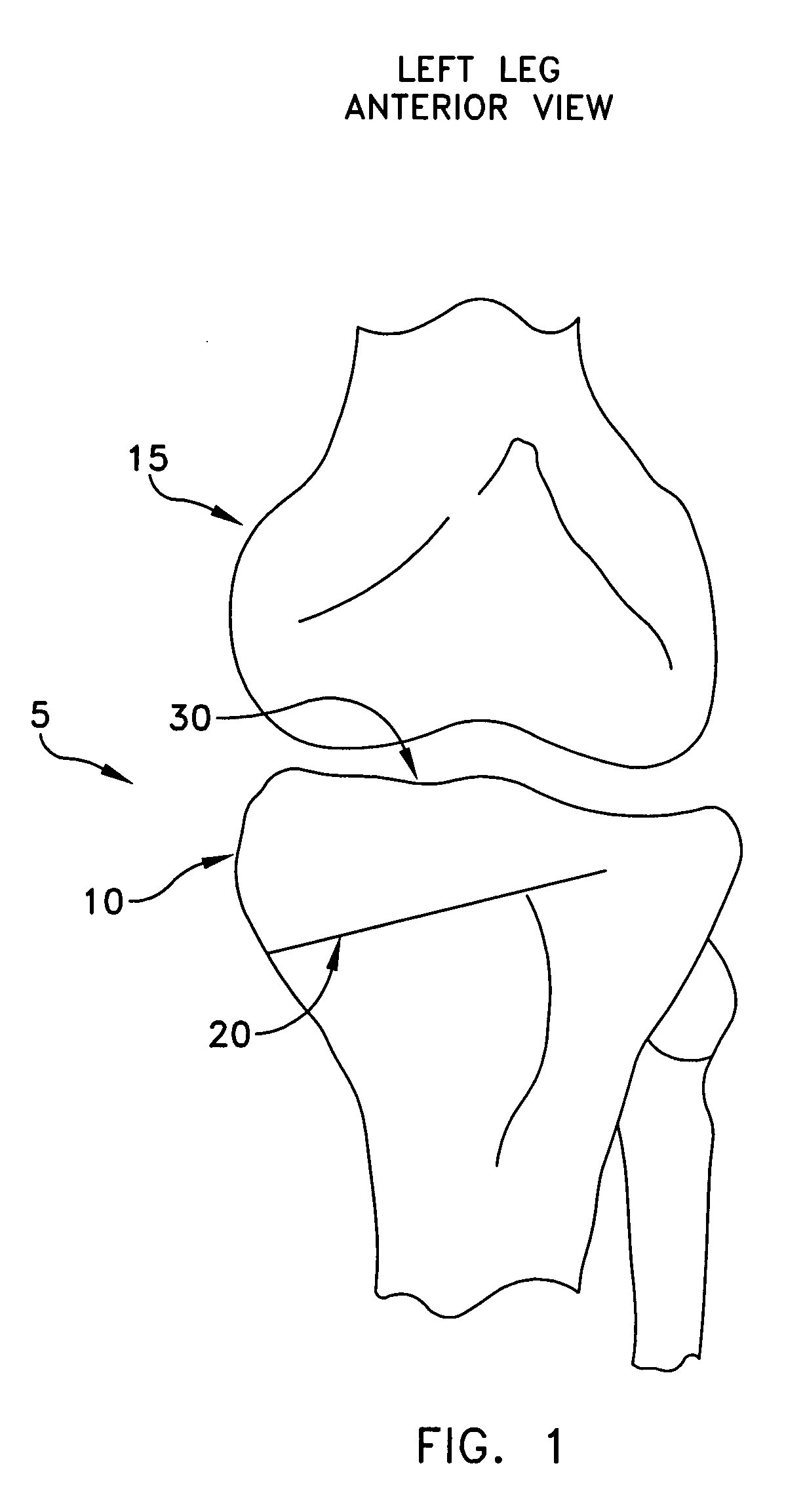Method and apparatus for performing an open wedge, high tibial osteotomy
a high tibial osteotomy and open-wedge technology, applied in the field of surgical methods and equipment, can solve the problems of difficult to create the wedge-like opening in the bone with the necessary precision, difficult to stabilize the upper and lower portions of the tibia relative to one another, and procedural challenges for surgeons
- Summary
- Abstract
- Description
- Claims
- Application Information
AI Technical Summary
Benefits of technology
Problems solved by technology
Method used
Image
Examples
Embodiment Construction
Overview of an Open Wedge, High Tibial Osteotomy
[0069]Looking first at FIGS. 1-3, there is shown a knee joint 5 upon which an open wedge osteotomy is to be performed. Knee joint 5 generally comprises a tibia 10 and a femur 15. In accordance with the present invention, the open wedge osteotomy is effected by first making a cut 20 (FIG. 1) into the upper tibia, and then manipulating the lower portion of the tibia so as to open a wedge-like opening25 (FIG. 2) in the bone, with the wedge-like opening 25 being configured so as to adjust the manner in which load is transferred from the femur to the tibia. In this respect, it should be appreciated that a variety of methods are well known in the art for determining the degree of correction necessary to correctly re-align the weight-bearing axis of the knee. Furthermore, cut 20 and wedge-like opening 25 may be formed in a variety of ways well known in the art.
[0070]Among other things, the present invention provides a new and improved method ...
PUM
 Login to View More
Login to View More Abstract
Description
Claims
Application Information
 Login to View More
Login to View More - R&D
- Intellectual Property
- Life Sciences
- Materials
- Tech Scout
- Unparalleled Data Quality
- Higher Quality Content
- 60% Fewer Hallucinations
Browse by: Latest US Patents, China's latest patents, Technical Efficacy Thesaurus, Application Domain, Technology Topic, Popular Technical Reports.
© 2025 PatSnap. All rights reserved.Legal|Privacy policy|Modern Slavery Act Transparency Statement|Sitemap|About US| Contact US: help@patsnap.com



